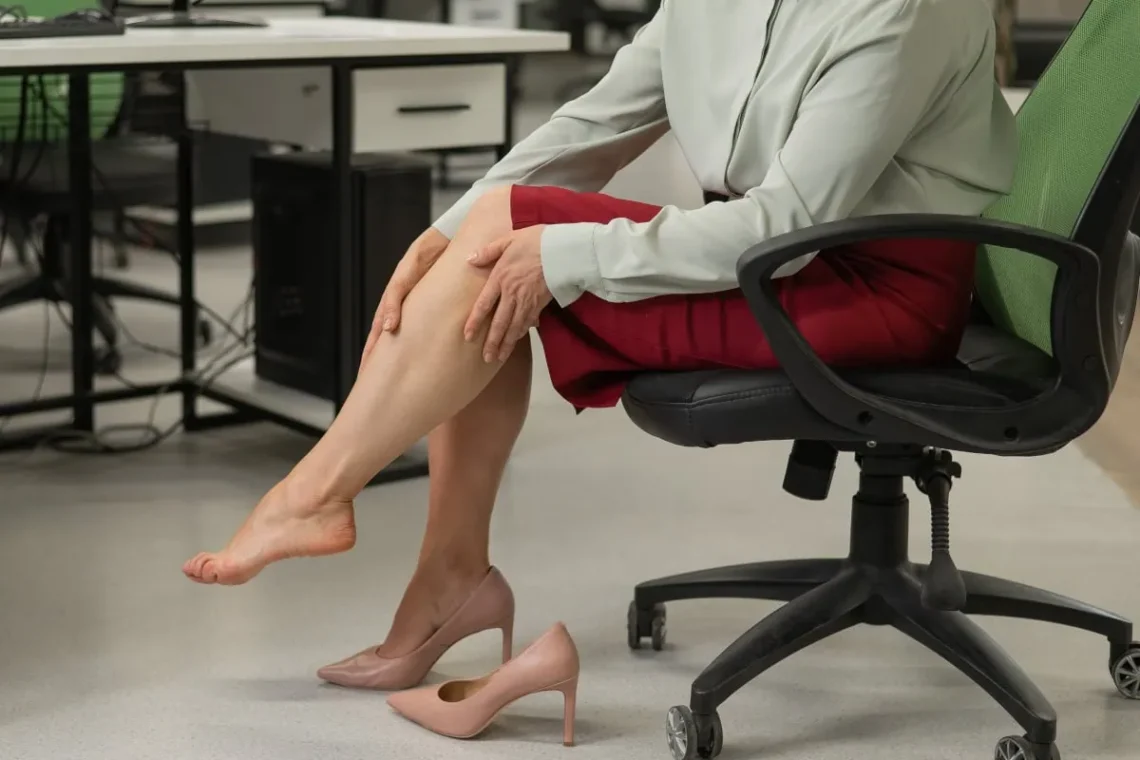
Leg pain is a common complaint that can include a multitude of causes. The purpose of this blog is to give you the more common causes so that you may better understand your leg pain. Generally speaking, leg pain can be caused by injury, overuse, and also from general health conditions. It can also be related to circulatory problems and nerve conditions. This blog may serve as a general guide to know what type of specialist you should see that can treat leg pain based upon which of the following symptoms you may have.
Circulatory conditions to be aware of for causes of leg pain
Circulatory conditions that may cause pain in the legs include varicose veins, thrombophlebitis (blood clot), and peripheral arterial disease.
- Varicose Veins – This is a common condition caused by veins that do not function properly. Arterial blood flows down the extremity to the foot and has to travel back to the heart through the veins. There are one-way valves in the veins that oftentimes work improperly, and their function is to not allow the backflow of venous blood back toward the foot. When these veins are dysfunctional this can lead to a buildup of venous blood in the veins causing them to enlarge. These are called varicose veins and they can be unsightly and painful.
- Thrombophlebitis (Blood clot) – A blood clot may occur when the blood in the vein traveling back up to the heart becomes clotted. This can happen in the superficial veins in the lower leg closer to the skin and generally will cause pain in the area of that vein. As the veins travel back up towards the heart, they travel deeper into the leg, especially when they approach the knee joint area. If the deeper veins become blocked with a blood clot this is called deep vein thrombosis (DVT). This will cause more generalized pain in a larger area and possibly the entire leg and it is critical you seek medical attention. If the blood clot breaks off and travels to the heart and lungs, this situation can be fatal. Situations that can lead to this are associated with long periods of sitting such as in an airplane or car for long periods of time, and can be associated with trauma in the lower extremity or after surgery in the lower extremity where there is immobilization and reduced activity.
- Peripheral Arterial Disease (PAD) – Peripheral Arterial Disease simply means the blood flow from the heart to the foot can be blocked by the narrowing of arteries. This can also be called arteriosclerosis. When the blockages become more severe, pain can occur in the legs with activity, and this is called intermittent claudication. A typical complaint would be that you get muscle cramps and pain in the calf area after walking one or two blocks. You discontinue walking, the pain goes away but when you start walking again the pain returns. This can be an indication of poor circulation. This is more common in diabetics and also the narrowing of the arteries in diabetics tends to happen in the lower leg and foot rather than the larger arteries in the knee area and above. Lack of arterial blood flow to the foot makes you susceptible to infection and even amputation if an injury or infection occurs in the lower leg.
Nerve symptoms
Nerve symptoms in the legs are very common and the majority of these symptoms are associated with three major diagnoses. The symptoms are the lower back, neuropathy, and restless legs.
- Lower Back – Many patients are diagnosed with nerve symptoms that are occurring in the leg below the knee and into the foot and it is assumed that the region of the lower back called the lumbar area is causing these symptoms. The area of the lower back called the lumbar area is the area where the sciatic nerve which is the primary nerve that supplies the legs and feet originates. Often patients are diagnosed with radicular pain that radiates from the leg, thigh, and down into the foot. These symptoms can include burning, tingling, and sharp radiations of pain. Treatments for this are directed at treatment of the lower back including chiropractic treatments, physical therapy treatments, injections, and sometimes surgery. The symptoms in the legs would then correspond to lower back pain for most people.
- Neuropathy – Nerve pain from neuropathy can include burning, tingling, numbness, and sometimes weakness predominantly from the knee down. Oftentimes it can be limited to the top and bottom of the foot and with very little extension to the leg but it can also include the leg. Because conventional medicine has so many healthcare professionals evaluating and treating the back, oftentimes a patient will be told that the neuropathy symptoms are related to their back. As a peripheral nerve surgeon, I see this quite frequently. The patient is led to believe the neuropathy is caused by their lower back when in fact the symptoms are attributed to compression of tight nerve tunnels in the lower extremity. There are five of these nerve tunnels much like the carpal tunnel in the upper extremity. Patients are often told when they have neuropathy whether it is nondiabetic or diabetic it is irreversible.This is not true.
As a peripheral nerve surgeon who performs surgery on patients with diabetic neuropathy and nondiabetic neuropathy, we find that the majority of these patients have compression of various nerve tunnels in the lower extremities. There is hope for the reversal of neuropathy! These patients may also suffer from a condition called drop foot which means they have difficulty bringing their foot upward, moving their foot sideways from the opposite foot. They may also have severe balance and gait disturbances because of the numbness combined with their weakness.Conventional treatment is primarily directed at pharmaceutical drugs that manage the symptoms but do not address the cause. (please consider viewing testimonial videos of the reversal of neuropathy and two peer-reviewed papers showing intra-operative nerve testing and objective evidence of nerve function improvement in the operating room)
- Restless legs syndrome – Restless legs symptoms can be mild or very devastating to patients as it causes patients to lose their ability to sleep, making it difficult to go to sleep, or because of the symptoms they are consistently waking them up. The symptoms include anxiousness in the legs that seems to be present more at night when lying down or during the day when sitting. Symptoms are usually relieved by standing or walking. Other symptoms may include creepy crawling sensations, pulling sensations, cramping, and jerking. Conventional treatments may include the use of iron supplements as low iron levels are thought to be associated with restless legs or taking drugs that increase dopamine levels as the neurotransmitter dopamine is speculated to have lower concentrations in the brain in those with restless legs.As a peripheral nerve surgeon, I have been having great success with nerve decompression surgeries to open up tight nerve tunnels in the lower extremity that are believed to be causing restless legs symptoms. I have published a book called “A Perfect Night’s Sleep” that explains my background and the concept that restless legs may be more of a mechanical problem caused by tight nerve tunnels. I also have one peer-reviewed published paper documenting my findings.
Soft Tissue Problems that cause leg pain
This may include the following:
- Achilles tendinitis or Achilles tendon tear
- Baker’s cyst – a cyst that occurs in the upper part of the leg just below the knee.
- Muscle tear – this can happen from an injury, especially to the gastrocnemius muscle.
- Muscle strains – this can be due to overuse.
- Cellulitis – this will usually be associated with redness and heat, and it is a soft tissue infection.
- Shin splints – this can occur from overuse of the muscles that originate in the leg bones that extend down to the foot and are used to stabilize the ankle.
- Tendonitis – this can be from the Achilles tendon or other tendons around the lower leg and ankle level that stabilize the foot.
- Growing pains – this can occur in children as they are growing. The child may complain of leg cramps. The idea is that their bones grow faster than their soft tissue structures.
Bone
- Fractures – The two main bones of the lower extremity – the femur or tibia – may have a fracture. If a significant fracture is present, the pain is severe. If stress fractures are present, pain may be moderate and pain may be localized to where the stress fracture is located.
- Bone Tumor – Malignant bone tumors are rare, but they can cause significant pain.
Miscellaneous
- Electrolyte Imbalance – this can be caused by a lack of sodium, potassium, or calcium.
- Charlie Horse – this often occurs at night and may be associated with electrolyte imbalance or overuse of the lower leg muscle. Gently stretching can help alleviate the Charlie horse.
- Muscle spasms – this can occur from overuse of the muscles of the lower leg.
Finally, it is important that if you have had leg pain for a very long time, you should see a professional who can evaluate the causes, and treat your leg pain. This blog should help you understand which type of doctor to see based on your symptoms. I should stress that if you have symptoms that seem to be restless legs or neuropathy, you should consider seeing a peripheral nerve surgeon as they may be more likely to get to the root cause of your problem and not just manage your symptoms with medication.
Book your appointment online or call our Fort Collins and Broomfield, Colorado foot and ankle specialists at the clinic nearest you.
Schedule an Appointment

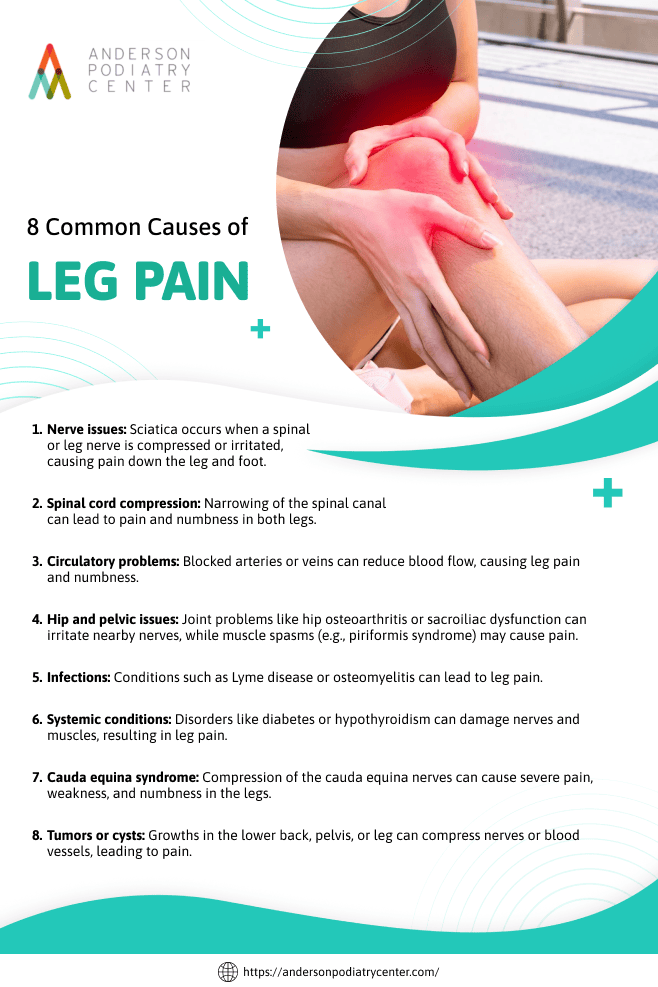




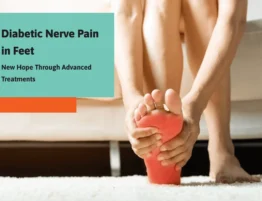

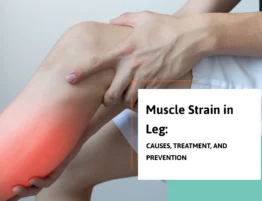
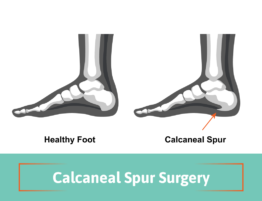
Write a comment: